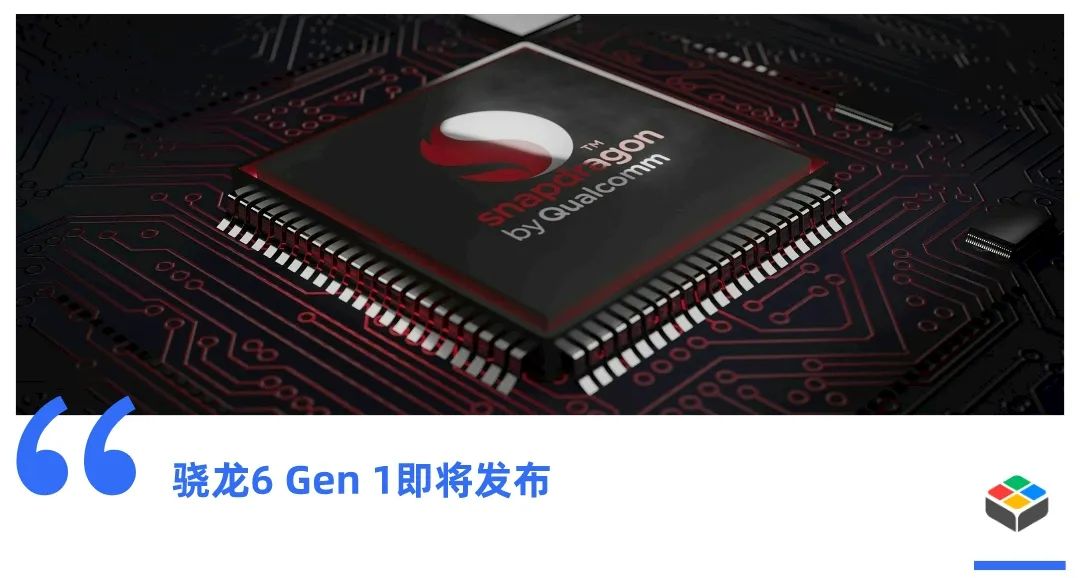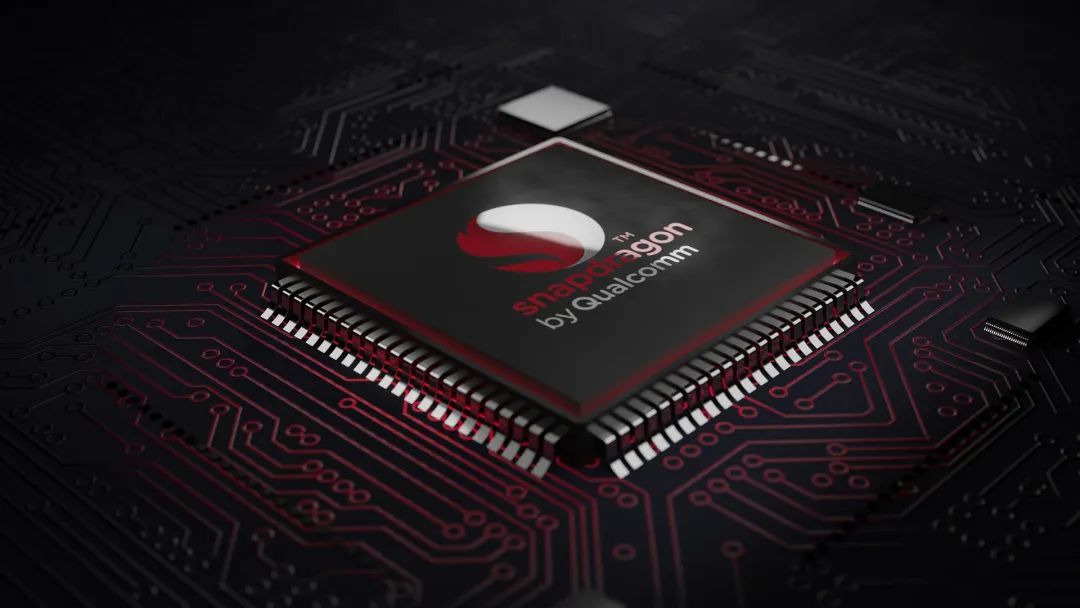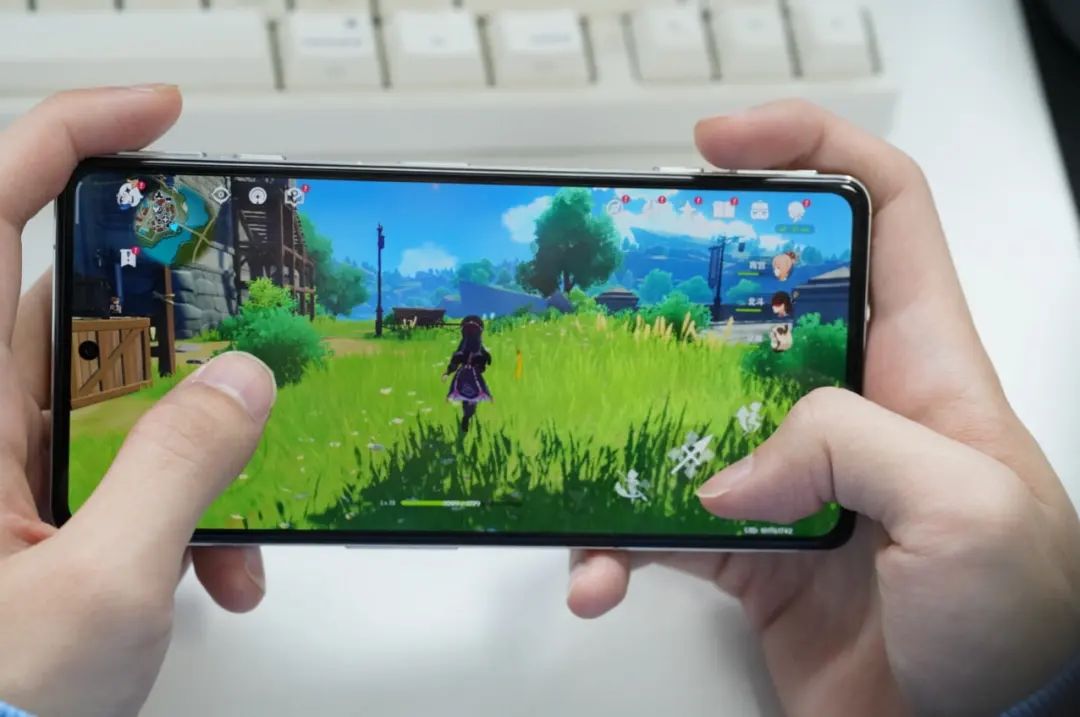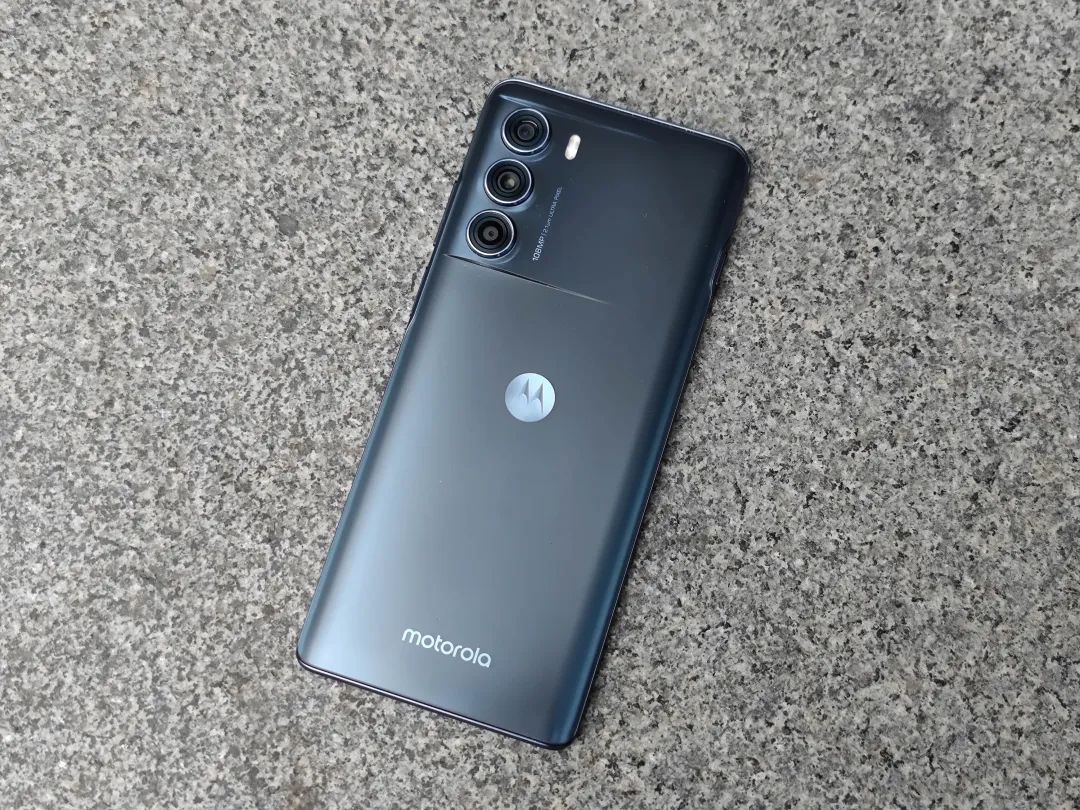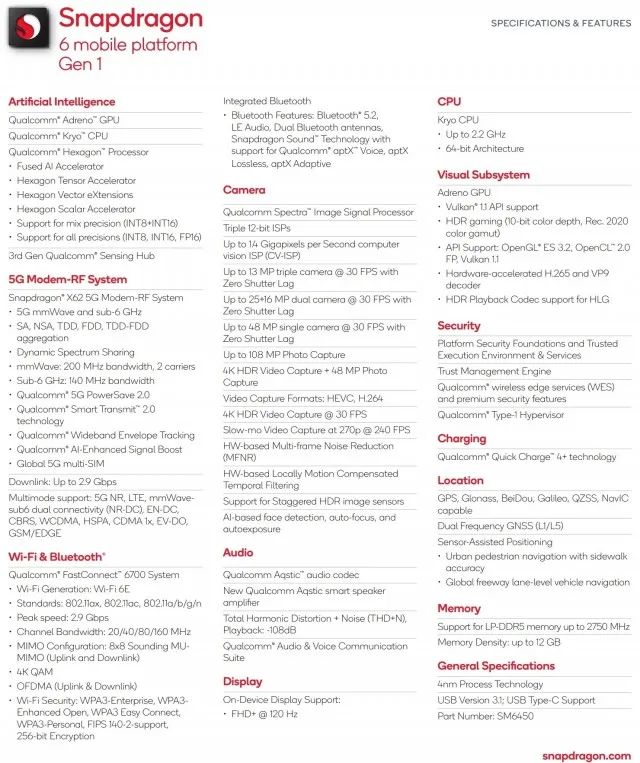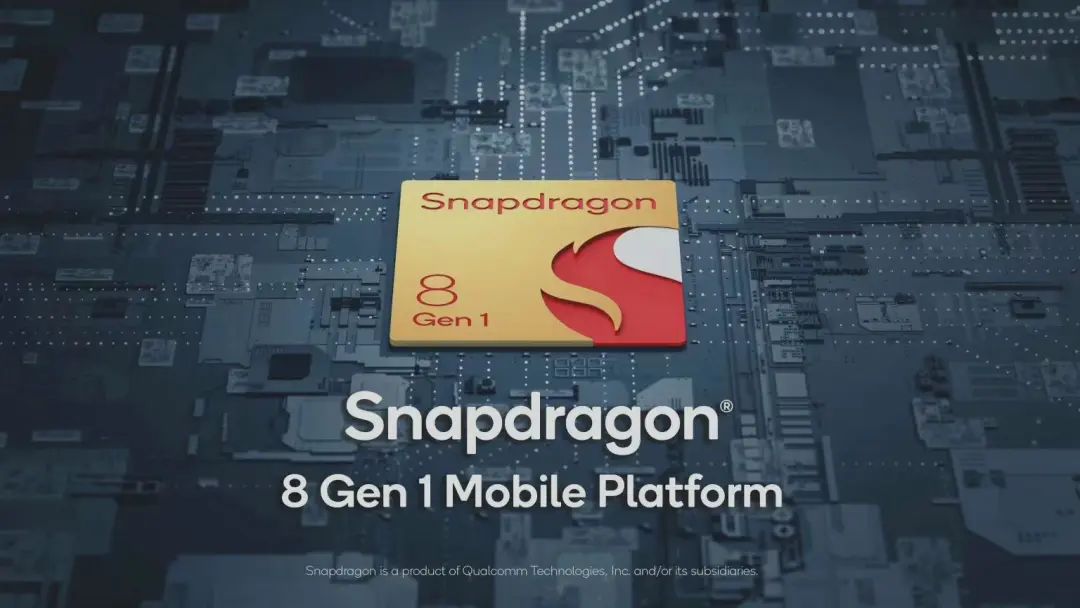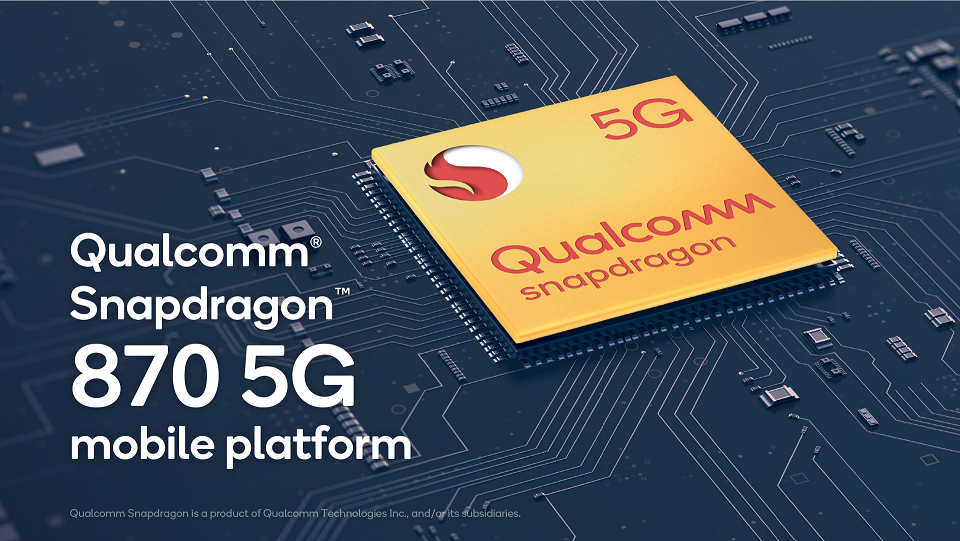Source: Lei Technology Digital 3C Group
Edit: lost soul
Starting from the end of 2021, Qualcomm Snapdragon processors will no longer use the previous naming rules, but will be replaced by the simpler Snapdragon X Gen N (X refers to series, N refers to generations). In the past, there were four main series of Snapdragon processors, including 8 series, 7 series, 6 series, and 4 series. The bigger the number, the more high-end. Now that 2022 is coming to an end, we only see Snapdragon 8 Gen 1 and Snapdragon 8+ Gen. 1. Three products of Snapdragon 7 Gen 1.
Recently, foreign media GSMArena released news of Qualcomm's new processor Snapdragon 6 Gen 1, indicating that Qualcomm will once again make efforts in the low-end market. However, today is different from the past. Chips such as Snapdragon 660 and Snapdragon 435 used to be called God U, because their power consumption and heat generation are very low, and their performance is not bad. The most important thing is that the price of mobile phones equipped with them is only a few 100 yuan, a big gap with the price of high-end machines.
After the MediaTek CPU returned to the high-end mobile phone market, the competition with Qualcomm became more intense. The performance of the mobile phone CPU was no longer a problem, and the price was getting lower and lower. processor?
low end CPU
The situation is really embarrassing
The biggest problem of low-end mobile phone CPU is not its own lack of performance, but facing many powerful opponents, suitable for Snapdragon 4 series and 6 series mobile phones, if the price is too expensive, it will lose its competitiveness, and if the price is too cheap, the profit will be too low. . To rise again, Qualcomm's low-end CPUs must defeat three major rivals.
First, the Snapdragon flagship processor will be decentralized. Although the price of Qualcomm's flagship core is relatively expensive, but more castration of some other aspects of the configuration can always save costs, and launch some mid-range and sub-flagship mobile phones equipped with flagship cores. Although the experience of these mobile phones equipped with Snapdragon flagship chips is not satisfactory, the performance is very strong. Low-end mobile phone consumers do not demand the bucket experience, and naturally like this kind of mobile phone very much.
Source: Filmed by Lei Technology
Such mobile phones are generally around 2,500 yuan, such as the Redmi K50 e-sports version. In the event of a price reduction, the starting price may even be around 2,000 yuan. Compared with low-end mobile phones, the price is indeed slightly more expensive, but the experience can be improved by a few steps. The decentralization of the Snapdragon flagship chip will compress the living space of low-end mobile phone processors, allowing some people to choose to pay more to buy better ones.
The second opponent of low-end mobile phone processors is the flagship chip of Gaotong. After one year of mass production, the price of mobile phone processors will also decrease. Using these flagship processors of previous years, it will be easier for manufacturers to develop cost-effective mid-to-low-end smartphones. The most classic example is the moto edge S30, which is equipped with the Snapdragon 888 Plus. The starting price is only 1999 yuan, and the initial price for early adopters is only 1799 yuan.
Source: Filmed by Lei Technology
Another classic case is the Snapdragon 870, which is actually a variant of the Snapdragon 865. Until 2022, it will still be a chip that is deeply loved by users, because the models equipped with it are cost-effective enough. The performance of the flagship chips in previous years is much stronger than that of the Snapdragon 7 series and 6 series chips, but the price of the mobile phones equipped with them is similar, and even the price of the former may be lower, which once again squeezes the living space of low-end mobile phone chips.
The third opponent of low-end mobile phone processors is the mid-to-low-end processors from rival MediaTek. After MediaTek returned to the high-end market, it launched many chips. Due to its withdrawal from the high-end market for a period of time, MediaTek's consumer acceptance was not as high as that of Qualcomm, so it embarked on a cost-effective route at the beginning.
The Dimensity 800, Dimensity 1000+, Dimensity 1100, Dimensity 1200, Dimensity 8100 and other processors launched by MediaTek in the past two years have been widely used in low-end mobile phones, giving Qualcomm the most serious blow to low-end chips. . In the high-end field, Qualcomm is still a solid leader, but in the low-end field, the competitiveness of Snapdragon chips is slightly insufficient.
Really not worthy of high performance?
Another problem with low-end chips is that their performance is really not strong enough. Take the Snapdragon 7 Gen 1 as an example. class of chips compared to. The advantage of the Snapdragon 7 Gen 1 is that it has a newer architecture that can support new gaming features or a better screen and camera.
Let's take a look at the parameters of the Snapdragon 6 Gen 1. Based on the 4nm process technology, the main frequency is 2.2GHz, and it supports a 108-megapixel camera, FHD+ resolution, 120Hz refresh rate, and 30FPS 4K video shooting. Although there are no detailed performance parameters, it must be weaker than the Snapdragon 7 Gen 1, so the performance is probably the Snapdragon 845, or even worse.
If the price of the Snapdragon 6 Gen 1 model is too expensive, compared with the Snapdragon 870 and Snapdragon 1200 models, the competitiveness will not be enough. If the price is too cheap, the cost and profit need to be considered. Although 5G mobile phones have been available for many years, there are also some models of about a thousand yuan, but those products are trying their best to reduce costs.
If the Snapdragon 4 series and 6 series also pile up performance, one will increase the cost, and the other will narrow the gap with the flagship chip, which may affect the sales of Android flagships, which Qualcomm and mobile phone manufacturers are unwilling to see.
Source: Qualcomm official
Therefore, the Snapdragon 6-series chips and 4-series chips are embarrassing. Using the latest technology and architecture, the cost is already high, and the profit for low-end mobile phones is not enough. Mobile phone manufacturers would rather choose Dimensity 700, Dimensity 800U, etc. The latest MediaTek chips are functional and very cheap.
As for the screen and camera features supported by Snapdragon 6 Gen 1, it is meaningless for mid-to-low-end mobile phones. The thousand yuan phone is using chips such as Dimensity 8100 and Snapdragon 870. Snapdragon 6 series and 4 series give 1500 yuan. It is reasonable to use a mobile phone within the yuan, but how many mobile phones at this price will be equipped with a 108-megapixel camera? On the contrary, the screen technology is mature, and 120Hz is useful, but FHD+ is nothing new, and the previous Snapdragon 6 series chips also support it.
It is no exaggeration to say that the emergence and decentralization of chips such as the Snapdragon 870 and Dimensity 1000 series have made the living space of the Snapdragon 6 and 4 series chips smaller and smaller. In the past two years, Qualcomm has launched 4-series and 5-series 5G processors such as Snapdragon 480 and Snapdragon 695, but there are very few models equipped with them.
Source: Qualcomm official
This is also related to the domestic mobile phone industry environment. Three of the world's top five mobile phone manufacturers are in China. The moto, ZTE, Meizu and other manufacturers that are not on the list also have the intention of making a comeback. The overseas mobile phone manufacturer Apple has performed well in China. Although Samsung's performance is not good, but Reluctance to give up a market of 1.4 billion people.
The competition among mobile phone manufacturers is extremely fierce, so the products must be more cost-effective in order to stand out in the sea of machines, especially for cheaper mobile phones. Therefore, it is difficult for Snapdragon 4-series and 6-series chips to be equipped by manufacturers, which will make the products look less cost-effective.
The future of low-end cell phone chips
How does Qualcomm plan?
Qualcomm did not give up low-end chips, the main reason should be that there is demand in other regions. As mentioned above, three of the world's top five mobile phone manufacturers are in China, and other mobile phone manufacturers are niche brands. Because of this, in places with low consumption levels such as Southeast Asia and South America, the price of mobile phones is not cheap. The Snapdragon 6 series And the 4 series still has a lot of room to play.
As for the domestic market, according to the data released by Counterpoint, the average price of domestic mobile phones in the second quarter of 2020 increased by 13%, reaching US$310 (about RMB 2,130). Canalys data shows that the average price of mobile phones in China will increase by 10% in 2021. , has reached the price of mobile phones equipped with Snapdragon 870, Snapdragon 8100 and other chips, and the Snapdragon 6 series and Snapdragon 4 series chips have no room to play.
Xiaolei believes that Qualcomm can change its strategy. There is no need to use the latest technology for the Snapdragon 6 and 4 series chips, which is tantamount to increasing costs, but the 7nm~5nm process can be considered. The old process technology is mature and the cost is lower. Because it does not pursue performance, the heat generation and power consumption will not be very high, which is suitable for the low-end market.
The cost of the Snapdragon 6-series and 4-series chips has been reduced, and can be used for low-end, entry-level 5G mobile phones of around 1,000 yuan, which is convenient for the further popularization of 5G networks. GSMArena said that the Snapdragon 6 Gen 1 will be released at the Qualcomm Snapdragon Summit in Hawaii from November 15th to 17th. From the perspective of Xiaolei, the status of this chip in the Chinese market may not be as good as that of the Snapdragon 7 Gen 1. Chip models are probably very few.
Cover image source: pixabay

